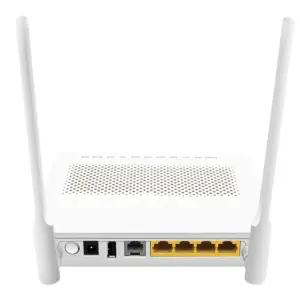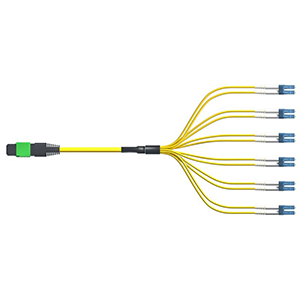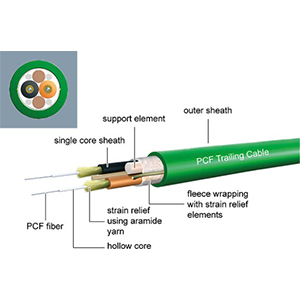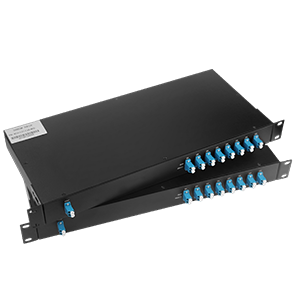The Cisco 4351 router is widely used in enterprise networks. This article will focus on the maximum throughput performance of this router. We will first briefly introduce the basic information of Cisco 4351, including its series and positioning. Next, we will define the concept of throughput and its importance, and analyze the main factors affecting throughput.
Then, we will focus on the maximum throughput specifications of Cisco 4351, including IPv4 BGP routing throughput and IPv4 forwarding throughput, and analyze the key factors affecting its throughput. Finally, we will combine actual application scenarios to evaluate the throughput performance of Cisco 4351 under different network scales and business loads, and summarize its performance advantages and limitations.
What is Cisco 4351 Router
The Cisco 4351 router is a high-performance enterprise-class device that supports a variety of network services and expansion modules. It is suitable for medium and large enterprises, with strong security, virtualization capabilities and flexible interface configuration to meet complex network needs.
1. Basic information of Cisco 4351:
- The Cisco 4351 router belongs to the Cisco 4000 series medium-sized enterprise-class router product line.
- This router is mainly aimed at medium-sized enterprises and branch office network environments, providing high-performance routing and security functions.
- The Cisco 4351 router is usually deployed in the core network location or branch office gateway of medium-sized enterprises.
2. Main hardware specifications of Cisco 4351:
- CPU: Cisco QuantumFlow Processor processor is used.
- Memory: 4GB DDR3 DRAM is standard, and the maximum support is 16GB.
- Storage: 8GB eUSB flash memory is standard, and SSD solid state drive is optional.
- Interfaces: 4 Gigabit Ethernet interfaces, 2 10GbE SFP+ interfaces.
- Power supply: Redundant hot-swappable power supply unit.
- Dimensions: 44 x 43.7 x 4.45 cm.
In general, the Cisco 4351 router can provide high-performance and reliable routing services for medium-sized enterprises and branch office networks with its excellent hardware configuration and rich functional features. It usually plays a key core router role in medium-sized enterprise networks.
The importance of throughput performance indicators
The importance of throughput performance indicators lies in that it measures the ability of network devices to process data. Higher throughput means that the device can transmit data faster, support more users and applications, improve network efficiency and response speed, and is crucial to ensuring the stability and performance of the system.
1. The concept and measurement method of throughput:
- Throughput refers to the amount of data successfully transmitted by a network device per unit time.
- It reflects the data transmission rate of a network device and is a key indicator for evaluating its performance.
- Throughput is usually expressed in Gbps (gigabits per second) or Mbps (megabits per second).
- When measuring throughput, a large number of data packets are usually sent and the amount of data successfully transmitted is counted.
2. The main factors affecting throughput:
- Hardware configuration:
- Hardware parameters such as CPU, memory, and switching matrix will directly affect the throughput of the device.
- Software optimization:
- The optimization level of the network device’s operating system, driver and other software will also affect the throughput.
- Network environment:
- Signal interference, network congestion and other network environment factors will also limit the actual throughput of the device.
- Business characteristics:
- Complex business traffic (such as encryption, detection, etc.) will also reduce throughput.
In summary, throughput is one of the key indicators for evaluating the performance of network equipment. Improving throughput requires optimization and improvement from multiple levels such as hardware, software and network environment. This is crucial to ensure that network equipment can provide users with high-speed and stable network services.
Maximum throughput performance of Cisco 4351
The maximum throughput performance of Cisco 4351 router is 20Gbps. This enables it to handle high-traffic data transmission needs, suitable for medium and large enterprise networks, support complex network services and applications, and ensure efficient performance and stable network operation.
1. Maximum throughput specifications of Cisco 4351:
- Maximum IPv4 BGP routing throughput: 20Gbps
- Maximum IPv4 forwarding throughput: 12Gbps
These data show the powerful data forwarding performance of Cisco 4351, which can meet the key routing needs of medium-sized enterprise networks.
2. Key factors affecting Cisco 4351 throughput:
- Impact of security features:
- If security features such as firewall and IPS are enabled, throughput performance will be reduced.
- Impact of QoS and other features:
- Enabling complex QoS policies will also have a certain impact on throughput.
- Differences in different application scenarios:
- In simple L3 forwarding scenarios, Cisco 4351 can achieve maximum throughput.
- However, in complex business scenarios such as encryption and detection, its throughput will decrease.
In general, Cisco 4351 can provide up to 20Gbps BGP routing throughput and 12Gbps IPv4 forwarding throughput. However, the throughput in actual applications may vary due to advanced features such as security and QoS, as well as specific business scenarios.
How does Cisco 4351 perform in actual applications?
In actual applications, Cisco 4351 routers can usually achieve a throughput close to 15Gbps, which is suitable for handling high-traffic data and complex network environments. Its stable performance supports a large number of users and applications, ensuring the efficiency and reliability of enterprise networks.
1. Cisco 4351 throughput performance in actual network:
- Medium-sized enterprise network environment:
- In medium-sized enterprise networks, Cisco 4351 can provide 10-15Gbps of actual IPv4 forwarding throughput.
- With advanced features such as security and QoS enabled, its throughput is about 8-12Gbps.
- Branch network environment:
- In branch network deployment, the actual throughput of Cisco 4351 is usually around 5-10Gbps.
- In this environment, its performance can meet the network requirements of most branch offices.
2. Advantages and limitations of Cisco 4351 maximum throughput:
Advantages:
- It can provide powerful high-speed routing and forwarding capabilities for medium-sized enterprise networks.
- The maximum IPv4 BGP routing throughput is up to 20Gbps, which meets most network requirements.
- The overall throughput performance can be further expanded through stacking and other methods.
Limitations:
- In some high-load or complex business scenarios, the actual throughput of Cisco 4351 may be limited.
- If extremely high throughput performance is required, you may need to choose a higher-end Cisco router product.
- Large-scale expansion may also be limited by factors such as power consumption and mechanical space.
In general, the Cisco 4351 router can meet the core routing needs of most medium-sized enterprise and branch office networks with its excellent throughput performance. However, in some high-load scenarios, its throughput performance may be limited, and it is necessary to evaluate and select according to the actual situation.
Summary
The Cisco 4351 router is an excellent choice for medium-sized enterprise networks. Our company has long focused on the research and development and application of Cisco network products and has rich practical experience. We provide a full range of Cisco 4000 series router products to meet the needs of networks of different scales and scenarios.
Our Cisco 4351 router products use industry-leading technical solutions and have achieved excellent levels in throughput, reliability, and management functions. At the same time, our engineering team will provide you with professional demand analysis and solution design services to ensure that the deployed Cisco 4351 solution can meet your actual needs to the greatest extent. Contact us now to learn more.
Cisco 4351 Router FAQ
The Cisco 4351 router offers up to 2 Gbps of maximum throughput for IPsec VPN, up to 2 Gbps for firewall, and up to 1.5 Gbps for application optimization, depending on the configuration and feature set.
The Cisco 4351 has lower maximum throughput compared to the Cisco 4451, which offers up to 2.5 Gbps for IPsec VPN and up to 5 Gbps for firewall throughput.
Factors include the types of services enabled (e.g., VPN, firewall), the number and type of installed modules, network traffic volume, and the router’s configuration.
Throughput performance can be optimized by upgrading software, adding additional licenses, or configuring the router with higher-performance modules.
The Cisco 4351 router supports up to 2 Gbps of throughput for IPsec VPN, providing robust performance for secure connections.
The maximum firewall throughput for the Cisco 4351 is up to 2 Gbps, suitable for high-performance security applications.
Yes, the Cisco 4351 supports high-availability configurations with features like redundant power supplies and fan trays to ensure continuous operation.
Network modules such as WAN interface cards, service modules for security or application optimization, and additional NICs can impact the router’s overall throughput.
With its 2 Gbps throughput capabilities, the Cisco 4351 is suitable for medium to large enterprise environments but may not meet the needs of extremely high-traffic or large-scale deployments compared to higher models.
Yes, the Cisco 4351 is designed to handle high-traffic environments effectively within its throughput limits, making it appropriate for many enterprise applications.






